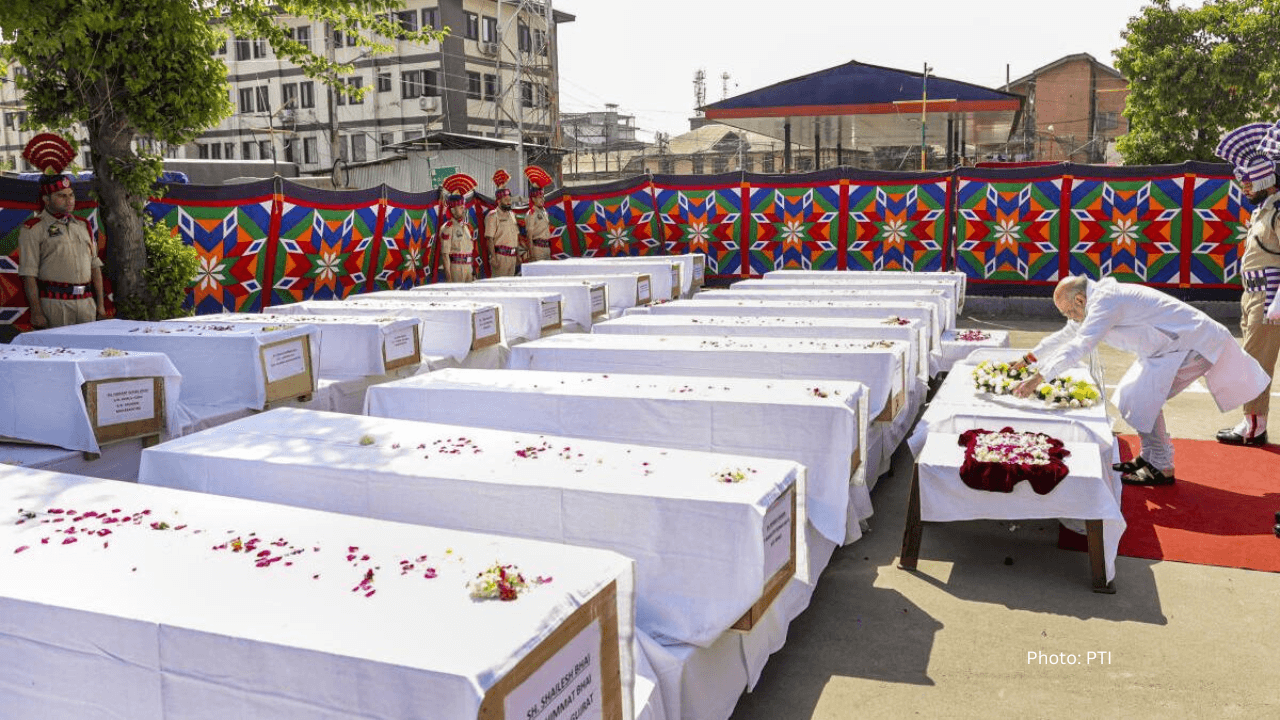Pahalgam Attack and the Fragile Illusion of Peace in Kashmir
Depanjali Roy | 25 April 2025
“Gar firdaus bar-rue zaminast, hamiasto, haminasto”
Famous Indian poet Amir Khusrau wrote this line in a poem which translates "If there is a paradise on earth, it is here, it is here, it is here." These lines he wrote to describe Kashmir, which is the northernmost region in India. Though the beauty of Kashmir is described and portrayed by many, its destructive side is also not unknown. From 1947, the history of Kashmir is very complex and has many layers. It is the people of Kashmir who bear the brunt of these troubling changes the region is forced to endure. Terrorist attacks, casualties among civilians,and mutual accusations between India and Pakistan have been recurrent phenomena..
However, the attack on April 22, 2025, was a shock to the world, as the motives of the terrorists appeared to be different from previous incidents. The Indian government has accused Pakistan of being behind the attack.According to Indian authorities, the attackers specifically targeted tourists, allegedly selecting victims based on religion. There were terrorist attacks in Kashmir previously but the number of victims has risen. As per Indian media reports, 26 civilians were killed, reportedly all male, and several were allegedly asked to state their religion or recite the kalma before being shot. This information, while widely reported in Indian outlets, may differ in presentation or emphasis in other regions and sources.The selection of the location for the attack was a strategic plan of the terrorists. Specifically, the attack took place in Baisaran meadow, in Pahalgam, located about 50km from the main city of Srinagar. The only way to reach this location was to walk or take a ride on a pony. The attackers know about this situation as the help can’t be reached soon to the victims.This terrorist attack is provoked outrage by the public, as the security force and the army deployed near Pahalgam has major information on terrorist movements, still they have not taken any measures to stop the attack.
However,Indian authority claimed that Pakistan was behind this attack, as two of the four alleged attackers in the attack were from Pakistan and other two are from Indian-administered Kashmir. It is further alleged by Indian intelligence that the latter two have crossed the border and taken terrorist training in Pakistan, later came back with other two companions to execute it. The government of Pakistan has strongly denied any involvement, with the Pakistani Defense Minister stating that the incident could be a false flag operation, allegedly intended to discredit Pakistan internationally. Meanwhile, it is reported by several Indian media outlets that the terrorist group The Resistance Front (TRF), believed to be a shadow outfit of Lashkar-e-Taiba, claimed responsibility for the attack. However, interpretations and credibility of such claims vary across regions and political narratives.
Following the attack, bilateral relations deteriorated rapidly. Both countries engaged in retaliatory diplomatic measures, including the expulsion of diplomats, suspension of visas, and closure of border crossings. Additionally, it was reported by Indian media that the government considered suspending the Indus Waters Treaty (IWT) of 1960, which regulates water sharing between the two nations. Given that nearly 80% of Pakistan’s agriculture and a substantial portion of its hydropower rely on Indus basin waters, Islamabad responded by warning that such action would be interpreted as an “act of war”.
After all the reactions from both the sides, it is clear the terrorist area does not support non-kashmiries to settle in Kashmir, have the quota in jobs and the right to buy land after the revoke of Article 370. This is another way of showing anger towards the Indian government on the Kashmir issue. On the other hand, local Kashmiri people have shown anger by joining protests and candle marches in the streets. Because the local people know whatever happens Kashmir and Kashmiri people will suffer only. Already 90 percent of the reservations by tourists are cancelled from every hotel. Already there is a high possibility that the 38-day pilgrimage Amarnath Yatra, which is a Hindu pilgrim palace for devotees, can be cancelled as a result of this heinous incident in Pahalgam. In 2023, 4.45 lakh pilgrims visited Amarnathat and at least 8 percent of the Union Territory's GDP generated from Kashmir tourism. In this regard, it is disappointing for the local people, as they earn their bread and butter from it. Even the students from Kashmir, studying in different places of India, are facing harassment, bullying and threats from other students. After getting complaints from different sources, J&K Students Association requested the Home Minister Amit Shah not to treat Kashmiri students unfairly or differently.
It is widely believed that the intent of the attackers was to provoke communal tensions across the region. In response, India reportedly launched “Operation Sindoor” on May 7, 2025, targeting alleged terrorist infrastructures in Pakistan-administered Kashmir and other regions across the border. According to both Indian and Pakistani reports, retaliatory strikes were carried out, with both sides claiming civilian casualties. The situation prompted international concern due to the involvement of two nuclear-armed states, underscoring the urgent need for diplomatic restraint and constructive engagement.
It is important to note that information regarding this incident has been disseminated differently across various countries and media platforms. Consequently, details may vary depending on the source, reflecting differing political perspectives and editorial priorities.
Depanjali Roy is the Chief of Staff at CGS
Views in this article are author’s own and do not necessarily reflect CGS policy.
